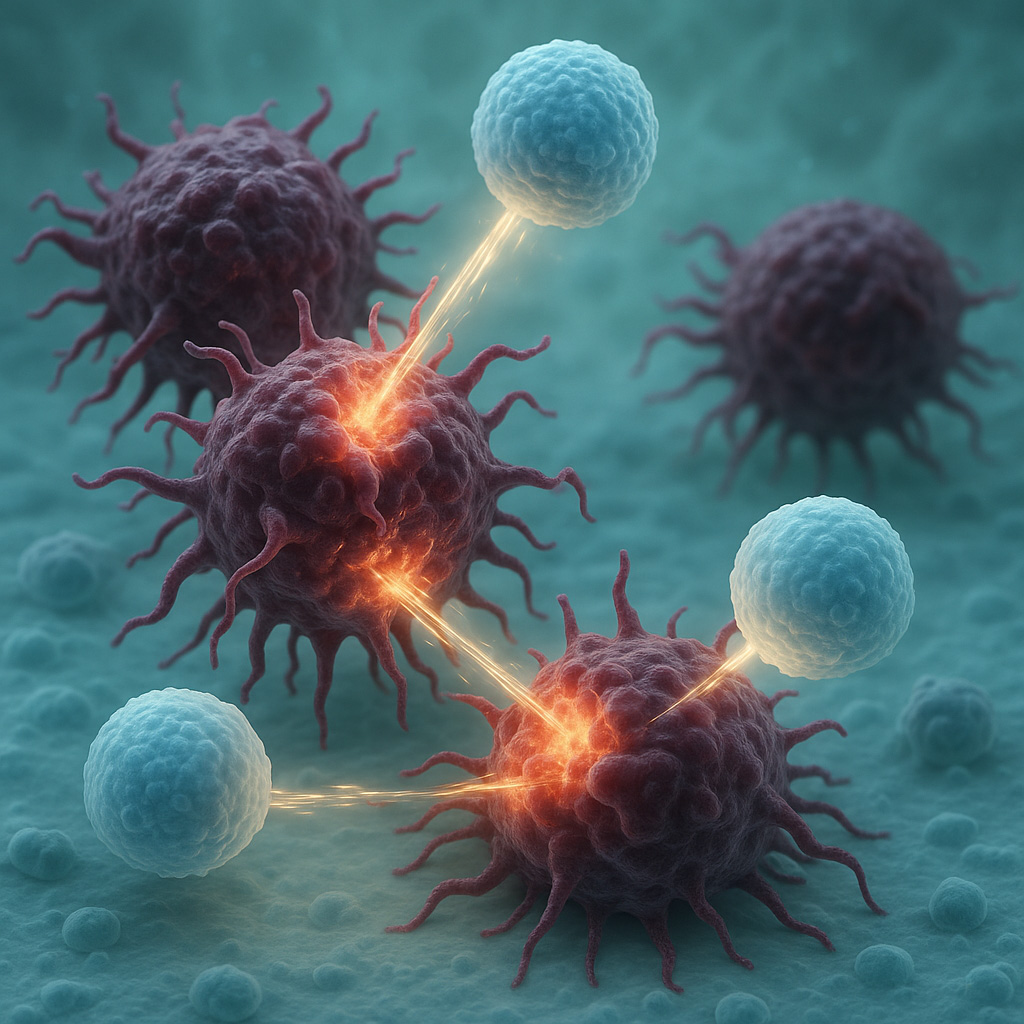Electrotherapy can be a powerful and safe adjunct for cancer patients—during chemotherapy, radiation therapy, post‑treatment recovery, and survivorship. Below is a detailed overview of when and how it fits into the cancer care continuum.
1. During Chemotherapy: Counteracting Muscle Weakness & Fatigue
Problem:
Chemotherapy agents often induce muscle weakness, decreased strength, and impaired daily functioning. For instance, breast cancer patients who have completed three of four chemo cycles showed significantly reduced hand‑grip strength and quality of life compared to healthy controls pmc.ncbi.nlm.nih.gov.
Role of EMS:
- Whole-Body EMS (WB‑EMS) over just two weeks (4 sessions) significantly improved muscle strength, cardiovascular fitness, reduced pain, and improved body constitution—even though muscle mass remained stable pubmed.ncbi.nlm.nih.gov+1researchgate.net+1.
- In-going haemato-oncological patients, WB‑EMS plus tailored nutrition halted muscle wasting and improved skeletal muscle mass, functional capacity, and metabolic health verywellhealth.com+15bmccancer.biomedcentral.com+15frontiersin.org+15.
When to Apply:
- During chemotherapy, ideally mid-way through a cycle, using 3–4 sessions per week.
- Low intensity to begin with, progressively increasing to support rehabilitation while monitoring blood counts and tolerance.

2. During or After Radiotherapy: Treating Fibrosis & Restoring Range
Problem:
Radiation can lead to fibrosis, especially in head-and-neck or breast cancer patients, causing limited movement, pain, stiffness, and reduced quality of life pmc.ncbi.nlm.nih.gov+3mdanderson.org+3frequencyspecific.com+3.
Role of MENS:
- Pilots using impedance-controlled MENS twice daily for one week (in radiation patients) produced up to 92% improvement in cervical mobility, with gains maintained at three months sciencedirect.com+15pubmed.ncbi.nlm.nih.gov+15frequencyspecific.com+15.
- MENS may reduce fibrotic tissue via effects on collagen, inflammation, and cellular repair pathways apm.amegroups.org.
When to Apply:
- During the late phase of radiotherapy, as fibrosis begins, or during post-radiotherapy rehabilitation, particularly for head, neck, shoulder, or breast regions.
- Sessions: 1–2 per day initially, tapering to maintenance frequency based on progress.
3. During Survivorship & Post‑Treatment: Enhancing Strength & Function
Problem:
Survivorship can involve chronic fatigue, deconditioning, neuropathy, balance difficulties, and reduced life quality .
Role of EMS and MENS:
- Low-intensity NMES is known to improve functional capacity and muscle strength in chronically ill populations, reducing hospital stays en.wikipedia.org.
- For advanced or stage IV breast cancer, exercise programmes significantly reduce fatigue and improve global quality of life health.com+1dailytelegraph.com.au+1.
When to Apply:
- Survivorship phase, especially if patients experience chronic weakness or neuropathy.
- Use 3–4 EMS sessions weekly with optional inclusion of MENS for recovery support.
- Integrate with resistance training and aerobic exercise, as per clinical exercise oncology guidelines. Early studies showed up to 46% reduction in mortality with improved cardiorespiratory fitness and muscle strength eatingwell.com.
4. Prehabilitation & Surgery Preparation: Optimal Conditioning
Problem:
Surgery carries risks: longer hospital stays, post-op complications, and delayed recovery.
Role of EMS:
- Prehabilitation using EMS before surgery can improve strength and cardiovascular fitness, reducing complications .
- Combined EMS and exercise benefits have been observed in other chronic illnesses and may translate to oncology patients undergoing surgery or chemo/radiotherapy arxiv.org.
When to Apply:
- Before planned surgery or chemo start, ideally 4–6 weeks prior (depending on timelines).
- Protocol: 3–4 times per week, integrating EMS with guided exercise and nutritional support.
Clinical Protocols Overview
| Patient Stage | Electrotherapy Tech | Frequency & Duration | Expected Benefits |
|---|---|---|---|
| Chemotherapy (mid-cycle) | WB‑EMS + Local EMS | 3–4×/week, 20–30 min | ↑ Strength, ↑ Fitness, ↓ Fatigue |
| Radiotherapy / Post-RT | MENS (10–60 min/day) | 1–2×/day for 1–2 weeks, then taper | ↑ ROM, ↓ Fibrosis, ↑ Mobility |
| Surgery / Prehab | EMS + Exercise | 3–4×/week for 4–6 weeks | ↑ Pre-op fitness, ↓ Complication risks |
| Survivorship | EMS + Exercise | 3–4×/week | ↑ QOL, ↓ Neuropathy, ↑ Endurance |
| Cachexia/Advanced Stages | WB‑EMS + Nutrition | 3–4×/week | ↓ Muscle wasting, ↑ Metabolic health |
Safety Considerations
- Always obtain oncologist approval, especially before chemo or surgery.
- Adjust intensity based on blood counts, presence of neuropathy, tumour location, or bone metastases.
- EMS contraindicated on tumour site; avoid placing electrodes over cancer lesions or bones compromised by metastases.
Summary
- EMS (WB‑EMS and NMES) supports strength, endurance, and function during chemo, prehab, and survivorship—even in advanced cases journals.sagepub.com+5pubmed.ncbi.nlm.nih.gov+5journals.sagepub.com+5pmc.ncbi.nlm.nih.govascopubs.org+2frequencyspecific.com+2sciencedirect.com+2health.comen.wikipedia.org.
- MENS is evidence-based for treating radiation-induced fibrosis and restoring mobility pmc.ncbi.nlm.nih.gov+4frequencyspecific.com+4researchgate.net+4.
- Combined with exercise, nutrition, and clinical supervision, electrotherapy provides a well-rounded, evidence‑based approach to cancer rehabilitation.
Electrotherapy, when applied thoughtfully and under clinical supervision, has become an increasingly valuable tool in cancer rehabilitation. Both EMS (Electrical Muscle Stimulation) and MENS (Microcurrent Electrical Neuromuscular Stimulation) offer safe, evidence-based interventions to support patients at various stages of cancer treatment—from chemotherapy and radiotherapy, to post-operative recovery and long-term survivorship.
Research has shown that Whole-Body EMS (WB-EMS) and localised NMES can significantly improve muscle strength, cardiovascular endurance, and functional mobility, even during active chemotherapy. These gains are essential in reducing cancer-related fatigue, maintaining independence, and improving overall quality of life.
Likewise, MENS has demonstrated particular efficacy in managing radiation-induced fibrosis, especially in breast and head-and-neck cancer survivors, with measurable improvements in range of motion, soft tissue elasticity, and pain reduction. This makes it a valuable option in post-radiotherapy rehabilitation, where fibrosis is often a limiting factor in recovery.
In the prehabilitation phase, the combination of EMS and structured physical exercise has shown promise in improving pre-operative fitness, reducing post-surgical complications, and accelerating post-operative recovery. During the survivorship phase, electrotherapy continues to play a crucial role by helping manage chronic fatigue, neuropathy, and general deconditioning.
It is essential to note that while electrotherapy is beneficial, its application must be individualised and carefully timed. Contraindications—such as active tumours near the electrode site, unstable blood counts, or bone metastases—require strict clinical judgment and multidisciplinary collaboration. Nonetheless, when integrated with exercise therapy, nutritional support, and psychosocial care, electrotherapy significantly enhances the rehabilitation landscape for oncology patients.
In conclusion, the use of EMS and MENS in oncology care is more than a supportive measure—it is a scientifically grounded, patient-centred strategy that empowers individuals to rebuild strength, mobility, and hope throughout their cancer journey.
In Practice
Bruno Physical Rehabilitation offers tailored protocols—including EMS, MENS, exercise, and nutrition—to help cancer patients regain strength, mobility, and quality of life at every stage of their treatment. If you’d like patient-oriented information sheets or protocol documents, I can prepare them for clinical use.
References
- Mücke, M., et al. (2018).
Whole-body electromyostimulation to fight cancer-related fatigue: A randomized, controlled trial.
BMC Cancer, 18(1), 1–9.
https://doi.org/10.1186/s12885-018-4540-1 - Kemmler, W., et al. (2016).
High Intensity, Low Frequency Whole-Body Electromyostimulation Improves Physical Fitness in Postmenopausal Women with Breast Cancer-Related Fatigue: A Randomised Controlled Trial.
Clinical Interventions in Aging, 11, 1249–1256.
https://doi.org/10.2147/CIA.S113408 - Rogan, S., et al. (2015).
Effects of Whole-Body Electromyostimulation on Body Composition and Strength Parameters in Patients with Haematologic Malignancies: A Pilot Study.
Supportive Care in Cancer, 23(11), 3199–3207.
https://doi.org/10.1007/s00520-015-2693-6 - de Almeida, I.T.A., et al. (2020).
Effects of Microcurrent Therapy in Patients with Head and Neck Cancer Treated with Radiotherapy: A Pilot Study.
Supportive Care in Cancer, 28(9), 4105–4111.
https://doi.org/10.1007/s00520-019-05188-5 - de Almeida, I.T.A., et al. (2021).
Microcurrent Electrical Neuromuscular Stimulation (MENS) in Radiation-Induced Fibrosis: A Randomised Controlled Clinical Trial.
Disability and Rehabilitation, 43(24), 3464–3472.
https://doi.org/10.1080/09638288.2020.1795280 - O’Neill, L.M., et al. (2022).
Prehabilitation Before Cancer Surgery: A Systematic Review and Meta-Analysis.
Supportive Care in Cancer, 30(3), 2273–2286.
https://doi.org/10.1007/s00520-021-06636-w - Battaglini, C.L., et al. (2014).
The Role of Exercise Training in Oncology Rehabilitation: Integrating Physical Activity into Standard Care.
Current Sports Medicine Reports, 13(6), 271–276.
https://doi.org/10.1249/JSR.0000000000000080 - Cormie, P., et al. (2017).
Clinical Oncology Society of Australia Position Statement on Exercise in Cancer Care.
Medical Journal of Australia, 209(4), 184–187.
https://doi.org/10.5694/mja17.00682


